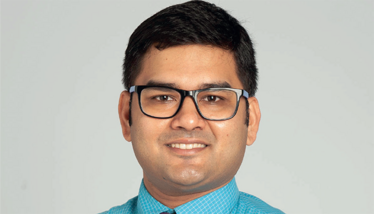Open or Closed?
How to find the right balance in cell therapy manufacturing
Krishnendu Khan | | 5 min read

As the demand for cell-based therapies continues to grow, the industry must explore current and future fill-finish packaging strategies. Understanding the advantages and challenges associated with different modes for cell therapy packaging will allow drug manufacturers to choose the most suitable system.
Chimeric antigen receptor (CAR) therapies, as a treatment avenue for various cancers, are gaining in momentum. Current approved therapies are mostly autologous in nature, which ensures no immune rejection of the drug product. However, as demand for CAR-based cell therapies increases, we’ll see the current manufacturing process become untenable due to its small production scale, high costs, and the time required for each “batch.”
These, and other challenges, are pushing scientists to develop a new generation of cell-based therapies that are allogeneic in nature with “off-the-shelf” options. To make such cell therapies accessible, a complete overhaul of manufacturing is needed as current processes are not equipped for large batches.
Autologous CAR therapies are produced through “closed” processing where the drug substance (cells extracted from patients) is isolated in a manufacturing unit that provides a controlled and sterile environment throughout production, formulation, packaging, and storage, as well as transportation. This approach has several advantages, including minimizing the risk of contamination and protecting the drug product from external pathogens.
But cost is an issue; such closed systems use containment technology that requires specialized equipment and infrastructure, often leading to higher capital and operational costs. Two approaches are currently followed: i) the use of modular equipment, where each piece of equipment is used for a single unit operation, such as cell isolation following apheresis, genetic manipulation, expansion followed by harvest, and final drug product formulation, or ii) all-in-one, end-to-end equipment that encompasses the entire process and uses single-use consumables.
Both approaches have their own advantages and pitfalls. Irrespective, as manufacturing needs increase (as will be the case with allogeneic therapies), the use of any equipment must be optimized. Moreover, monitoring critical parameters, such as cell viability or cell count, may require additional sampling or sampling ports that can introduce risks of contamination, essentially, “opening” the process.
Adaptability is another issue associated with closed fill-finish. Current CAR cell therapy manufacturing is designed around T-cells – the first (and relatively unchanged) cell type to be used. But the fixed design and infrastructure of closed fill-finish systems limits their compatibility with the evolving cell therapy landscape that requires the use of different cell types, including NK cells and macrophages. Modification or upgrades to the closed system may require additional validation and regulatory approval, leading to delays and increased costs. Moreover, the scalability of closed systems is limited because of constraints in equipment size or manufacturing capacity, and may require significant investments in additional closed systems or facility modifications as demand increases.
Although closed fill-finish is the way the cell therapy industry currently operates, we need to identify other solutions that allow for better scale up of the manufacturing process. To that end, we could consider an open fill-finish process, such as what we see with monoclonal antibodies. A primary advantage of this approach would be its flexibility in terms of scalability for allogeneic therapies. However, open fill-finish comes with inherent risks, such as increased likelihood of contamination, as well as the requirement for strict aseptic techniques, environmental controls, and highly trained personnel.
When discussing fill-finish, we also need to consider the final packaging container – usually a cryo-bag for cell therapy. These are adopted because of their proven use as containers for blood-based infusion products and also their compatibility with closed fill-finish equipment. But there are various challenges associated with cryo-bags, including bag-breakage at ultra-cold temperatures and the problem of dead-volume, which can lead to dosing errors. Moreover, the requirement for additional packaging material, like over-wrap bags and aluminium cassettes, along with racking systems for storage and transportation, increases the overall price and complexity.
One alternative to cryo-bags is rigid vials, which offer many advantages and are compatible with open aseptic fill-finish processes. Rigid vials provide excellent protection and stability for cell therapy products, with the hermetic sealing of vials providing an effective barrier against microbial contamination while helping to maintain sterility of the product throughout its shelf life. Rigid vials are also more suited for freezing, and can withstand long-term storage in the ultra-low temperatures required for cell therapies without affecting vital container closure integrity. Moreover, rigid vials have been used for a long time for other temperature sensitive therapeutics, such as monoclonals, so their use in cell therapy aligns with established industry practices and regulatory requirements facilitating the approval process. The compatibility, real time monitoring capabilities, sterility assurance, process development benefits and precedence of regulatory acceptance makes rigid vials well-suited for open fill-finish of cell therapy drug products.
The decision isn’t simply open or closed; it may also be possible to adopt a hybrid approach, where earlier steps of manufacturing are kept closed whereas the final fill-finish steps are done aseptically to gain the best of both worlds.
The choice between closed and open fill-finish for cell therapy drug products ultimately involves a careful balance between safety, accessibility, efficacy, and the type of cell type used. Closed manufacturing and fill-finish offers robust protection against contamination and environmental factors ensuring integrity of therapeutic cells; open aseptic fill-finish on the other hand provides greater flexibility and a route to scale up, which will be critical in the future as demand for therapies grows. By leveraging the advantages of both approaches, researchers and clinicians can optimize the safety, accessibility, and efficacy of cell therapies.
Krish obtained his PhD from India in Biochemistry following which he performed post-doctoral work in Germany and the US. Prior to joining West, Krish was involved in the commercialization of novel biologics and diagnostics. Currently, Krish is a subject matter expert in cell and gene therapy and leading West’s initiatives in this space.



















